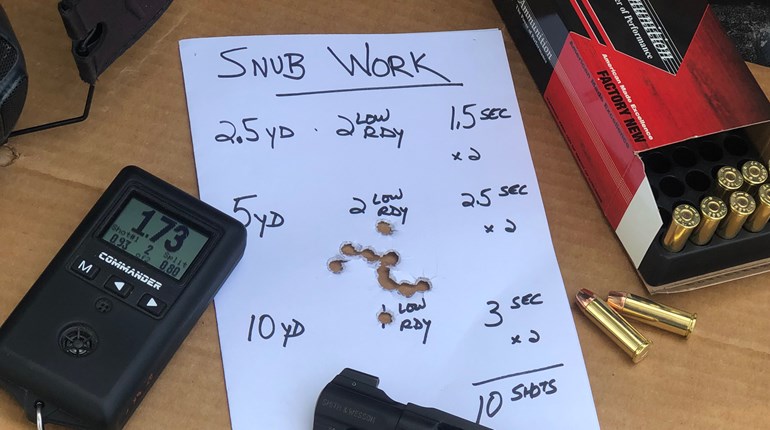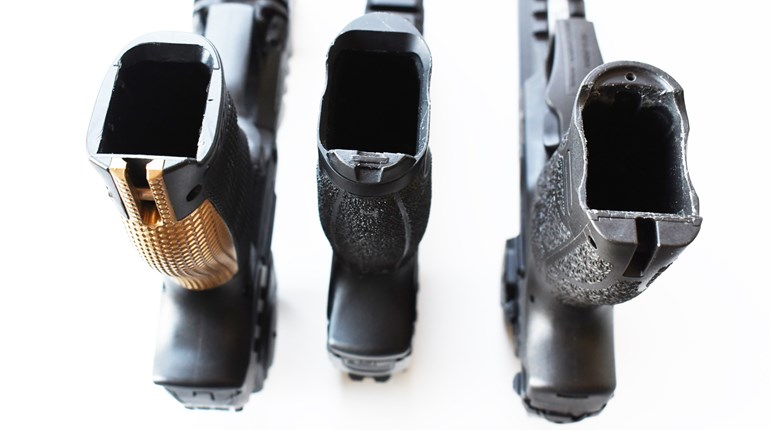
Heat waves shimmered outside the blind, making juniper trees twist and dance in the distance. Inside, the heat was stifling. A bead of sweat trickled down my temple and explored my ear, and I resisted the urge to reach up and mop it away. A big mule deer buck we’d hunted for two years was expected to rendezvous with us tonight, high in this ridge-top saddle between pinyon-juniper forest and alfalfa fields far below. My client sat motionless beside me, cradling a recurve in his hands, his arrow nocked and ready. Twelve yards in front of us I’d placed some attractant, hoping to pause the buck long enough for my hunter to place an accurate shot with his traditional bow.
The afternoon grew long, and the sun was settling into the horizon when the buck finally showed. He peeked over the rim of the saddle, studying his route for danger. Seeing nothing, he ambled along his path, rapidly closing the distance. A double handful of yards away he smelled the attractant and nosed around, giving my hunter the chance he needed. His arrow zipped through both lungs with that that damp “Schuk” sound that every bowhunter loves to hear. The magnificent old buck piled up in short order, bringing a month’s worth of hard work to fruition.
Closing within archery range of either mule or whitetail deer can be tough, especially if you’re hunting old, savvy bucks. Sometimes circumstances don’t allow effective stalking, and good, treestand-worthy trees are absent. A well-set ground blind might be your best option for arranging a favorable encounter. Here are setup tips and tactics learned from decades of hunting mule deer—and a few whitetails—from ground blinds.
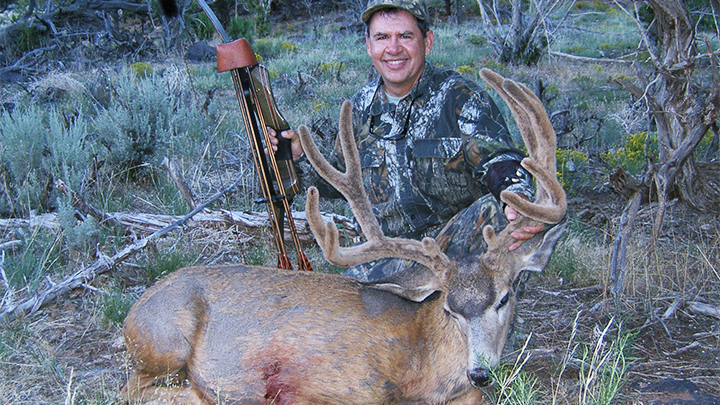
Location
Find A Funnel: Similar to choosing just the right tree to set your stand in, choosing the right spot to place your ground blind is critical. You need to place it in your target buck’s natural travel corridor. With mule deer it can be very hard to determine where the deer’s favorite corridor is, because in many areas they are nomadic to a maddening degree. I’ve watched a band of big muley bucks enter a field in twelve vastly different spots, twelve days in a row. In a case like this, you’ll need to use an attractant to inspire the buck(s) to choose one path more frequently. (More on that later.)
Use the Right Blind: The best pop-up blinds I’ve used are Double Bull blinds, which are now owned and made by Primos. They’re sturdy, feature material that doesn’t flap or make noise in the wind, and are designed for the bowhunter. Don’t even bother with cheap, flimsy blinds that rattle, shake and screech with every gust of wind. They’re a waste of time and will inevitably pressure deer into using other travel routes.
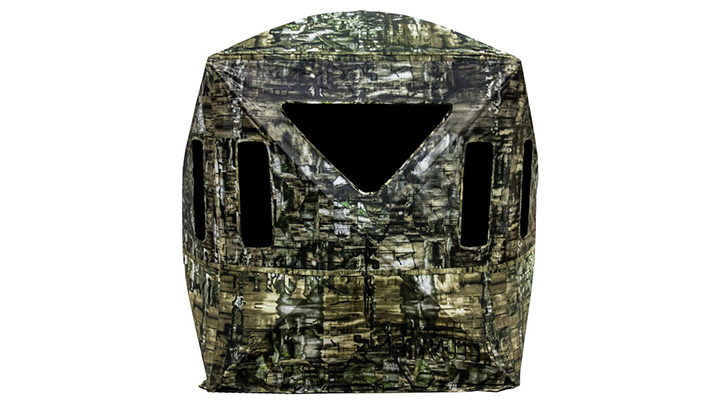
The Double Bull/Primos blinds feature an adjustable mesh that stretches across the windows and opening. It’s designed to shoot broadhead arrows through, without effecting arrow flight at distances under about 40 yards. You’ll need to use it when hunting deer, as the “black hole” created by an uncovered window makes deer nervous. Practice shooting through the mesh prior to hunting; it can be pretty discombobulating at first. Eventually your subconscious will phase the mesh out and you won’t even notice it.
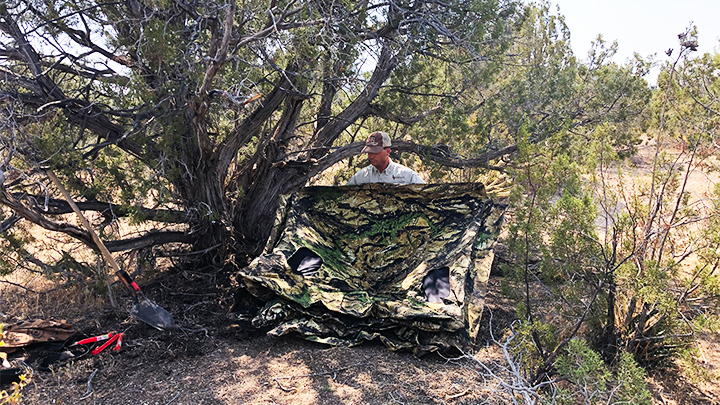
Note: Most expandable broadheads don’t play nice when shooting through mesh. Use a sharp fixed-blade head and make sure your arrows are well tuned and flying perfectly.
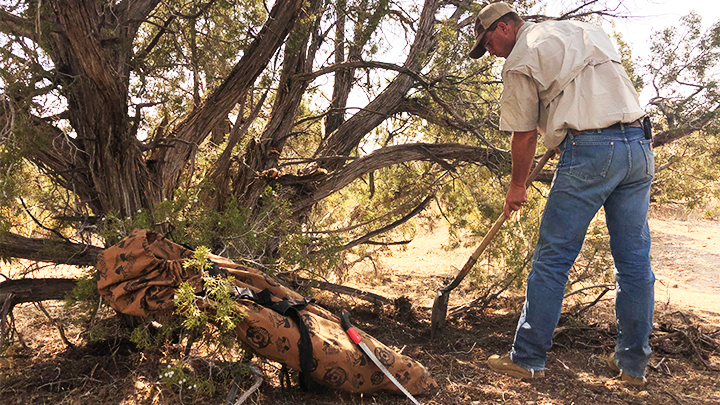
Setup
Chose Natural Cover: Once you’ve chosen your ambush spot, you need to figure out the best place for your blind. I prefer to setup in a clump of brush or trees that feature a natural pocket or cubbyhole into which I can stuff my pop-up blind. Juniper or cedar trees are ideal, and pinyon, oaks and other dense shrubbery work great as well.
Watch the Wind: Ideally, the prevailing wind will blow from the travel corridor toward your blind. This can be tricky to figure in much of the broken terrain common in the West, as thermal currents switch at the worst possible time. Do the best you can, and then take extra steps to control your scent. (More on that below.)
Plan Access: When you’re choosing a spot, keep in mind that you’ll need to access the blind without disturbing anything. Determine your entry and exit routes, and make sure they are navigable under cover of darkness.
Play the Sun: Make sure that your setup prevents the sun from shining directly in your “face” while you’re hunting. It’s absolutely maddening (I’ve been there) to have a big buck in range but not be able to see him at all because the sun has turned your mesh into a morass of fuzz that you can’t begin to see through. If you plan to hunt the blind both mornings and evenings, you’ll need to set up so your shot will be either northward or southward, so the sun will never be in your face. For an evening-only setup the ideal angle is facing east (with the sun behind you), and for morning the ideal angle is facing west. Lastly, if you plan on hunting afternoons, try to set your blind where it will receive afternoon shade. It will be hot even inside a shaded blind, and one set up in direct afternoon sun can become unbearable.
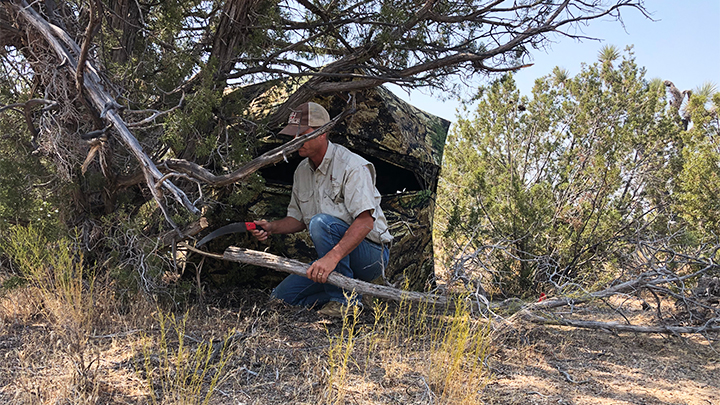
Clear Shooting Lane(s): A pop-up blind is not like a treestand, which affords you multiple shot lanes in different directions. You’ll need to choose your best shooting direction toward the trail, waterhole or attractant where you expect the deer to show. Clear one or more lanes in that direction, removing all twigs, branches, brush and so on. Don’t clear-cut the area (that’ll remove valuable cover), but do make sure that your lane isn’t obstructed.
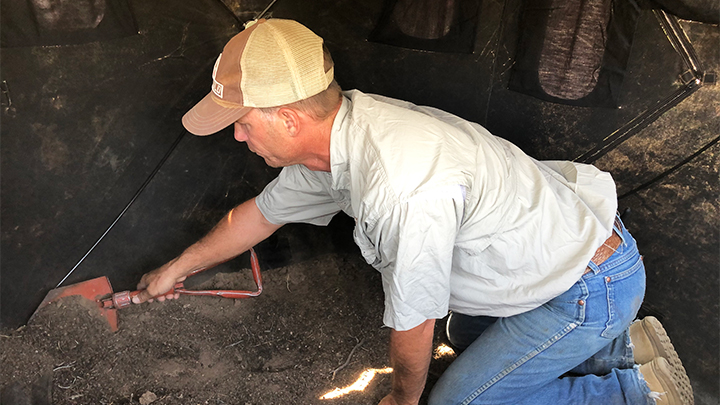
Stake It Down: Once you’ve chosen your location, factored in the wind and sunlight, and set up your blind, you’ll need to stake it down. A big gust of wind can relocate a blind, sometimes surprising distances. Stake out each guy line, and if it’s particularly windy in the area stake each corner of the blind as well.
Bury the Bottom: Here’s one of the most important (and most neglected) elements of correctly setting up your blind. Before you pop it up, clear the ground of brush, leaves, twigs, stickers and debris. Pop up the blind, stake it down, and then use fresh earth from in and around the blind to bury the bottom edges. The Primos Double Bull blinds have fabric flaps that fold inward when you set up the blind, which is ideal. Bury those flaps with dirt. That will seal off most airflow in and out of the bottom of the blind, and effectively filter any air that does escape through the dirt, infusing it with local scent. This is key.
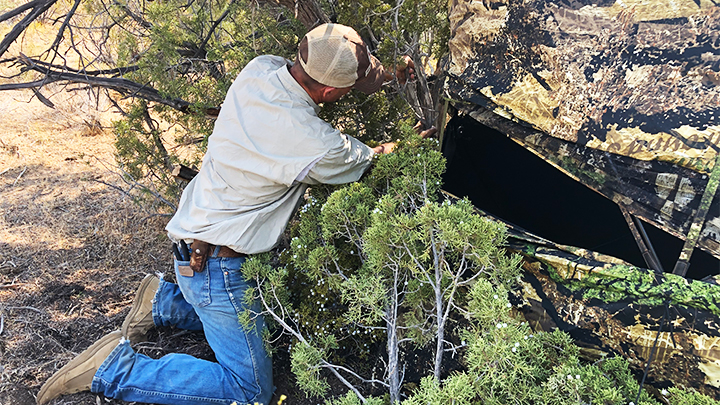
Brushing In
Once you’ve got your blind located, set up, staked down and buried in, it’s time to make it disappear. There is one caveat to this rule, though. If you need to set your blind up where there is no cover, don’t try to hide it. For instance, if you’re setting up in a flat deer are using to enter an alfalfa field, just pop it up, stake it down, dirt it in and leave. Deer will study it from a distance and reach the conclusion that it poses no threat. I’ve killed several bucks from blinds set up in just this way. But nineteen out of twenty times, you’ll need to brush your blind in.
Break It Up: The key is to eliminate all lines—especially silhouettes—and flat-looking parts of the blind. Cut branches from nearby vegetation (be wise and considerate when doing this) and weave them on and around the blind. Try to make it look as natural as possible. Continue until all surfaces and lines are obscured, even (especially) the roof. You don’t need to cover them entirely from sight, just break them up well. My favorite material for brushing in is cedar/juniper, but any kind of brush can work just fine. Leave the door accessible.
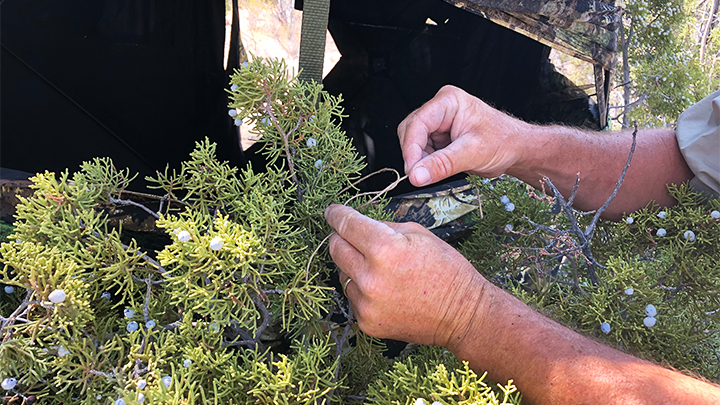
Tie It Down: Make sure the brush will stay in place for as long as you leave the blind up. Use string to fasten any branches that might fall or settle. If you expect snow or heavy rain, tie the center of the roof up to an overhanging limb so that it doesn’t collapse under pressure.
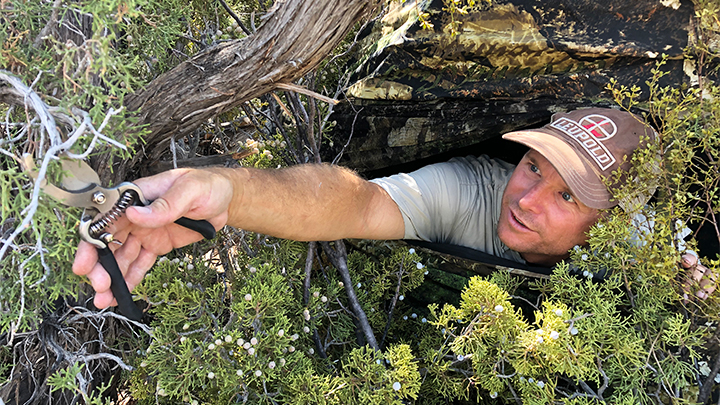
Trim Your Windows: If you’ve brushed your blind in properly you’ve almost certainly compromised your shooting windows. Climb inside the blind and pretend to shoot through the window. Visualize the arrow’s path, and meticulously trim any twigs or obstructions from each window until it’s perfectly clear.
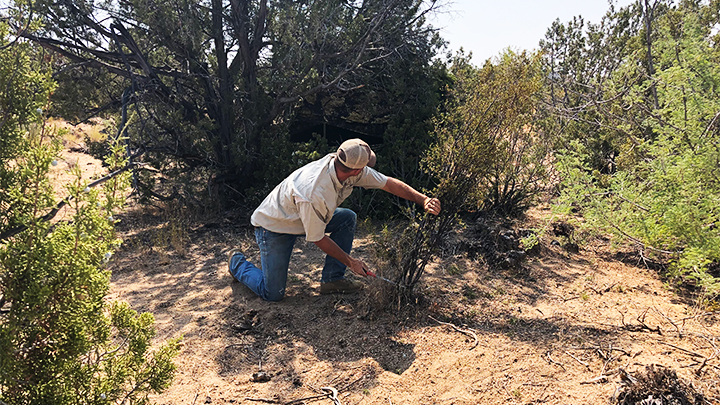
Scent and Silence
Control Your Scent: If a wise old buck or doe smells you in your blind, the jig is up. They will depart posthaste and will avoid the area in the future. The good news is that a properly set up blind is very effective at containing your scent. Add personal scent containment measures, and you become very hard to detect. I’ve had big bucks approach from directly downwind several times without busting me. I believe that whatever scent does reach them is diluted to the point that they believe it originates from a great distance, and is thereby not a threat.
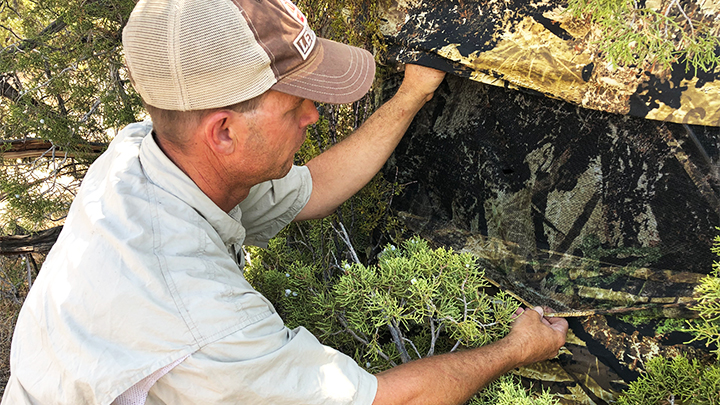
Keep all windows you don’t plan to shoot from closed, and keep the mesh stretched across the others. If you’re in the blind during early afternoon and it’s very hot you can open the roof and door to circulate some air, but once prime time is near you need to close them to contain scent.
Wear a scent-control base layer and clothing. I keep mine sealed in a plastic bag until I arrive at the blind, then quietly change, placing all my clothes and my shoes into another plastic bag to contain their scent. I wear only the base layer in the blind, unless it’s cold, in which case I don de-scented warm clothing as well.
Lastly, shower each day and take an appropriate dose of Chlorophyll. It’s a health supplement that’s also an effective internal deodorizer. It’ll reduce your body odor, as well as any bad breath and flatulence. Avoid eating onions, garlic and other smelly or spicy food while hunting from your blinds.
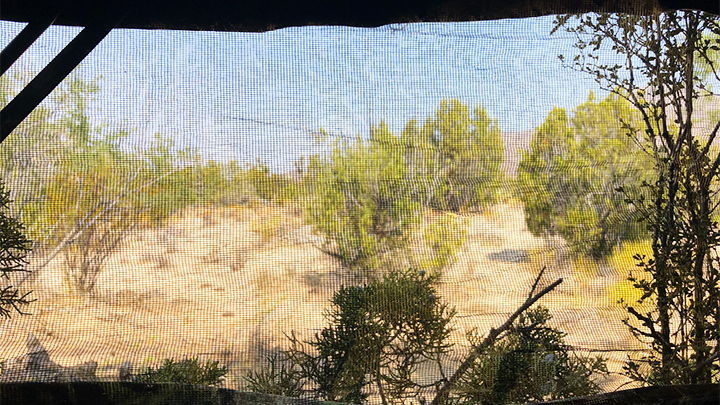
Silence: Mule deer don’t have those enormous ears for show—they can hear extraordinarily well. Whitetails are no slouches either when it comes to auditory ability, so you’ll need to practice silence inside the blind before hunting. I’ve watched several hunters blow an opportunity by accidentally scratching the inside of the blind with the tip of their broadhead. The tiny “snick” was all it took to put a big buck into a precipitous retreat. The most common sound I’ve seen ruin opportunities, though, is the whisper of an arrow sliding across the rest as a hunter is drawing his bow. You must eliminate that sound before ever hunting from your blind. Make sure your chair doesn’t creak, your clothing doesn’t rustle, and that you can raise your bow, draw and shoot in complete silence. It takes some tuning and tinkering, but it’s possible. I’ve had clients shoot big bucks four and six yards from the blind without a clue there was a hunter anywhere nearby.
Note: Never have windows open on opposite sides of the blind. Deer will see your silhouette against the bright background of the opposite window. Keep your background dark and wear dark clothing. Paint your face and hands dark, or wear a dark mask and gloves. Do this properly and you can get away with a surprising amount of movement, even with deer right in front of you.
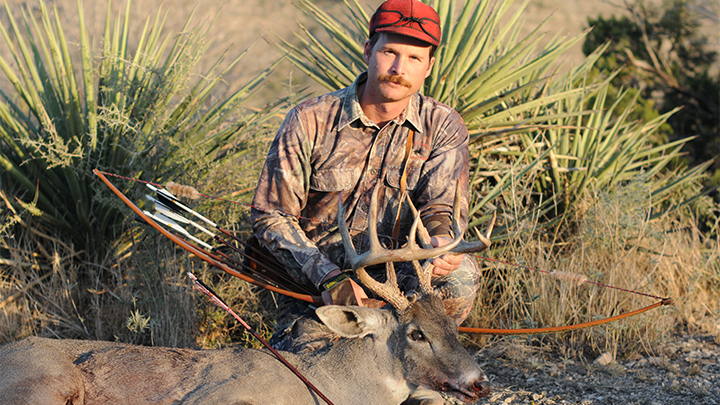
Attractant
This is a touchy subject, and must be approached with an eye to local game regulations as well as ethics. Rutting scent, minerals, water and food can all be used effectively, depending upon local factors. Always abide by your state’s hunting laws, and if you’re going to use an attractant, make sure you do so in an ethical manner.
For Traditional bowhunters (longbows and recurves) I like to set up, and/or place attractant, for a ten to twelve yard shot. You can use brush, deadfall logs and such to position a deer that investigates your attractant for a good broadside or quartering away shot.
For compound hunters I believe setting up for a 20 to 30 yard shot is about right. This puts the hunter outside the deer’s intimate personal space, and makes it a bit easier to get drawn without the deer hearing you.
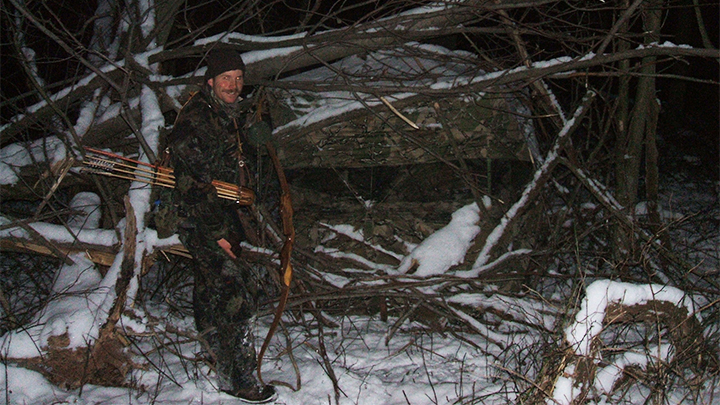
Conclusion
Some of my most memorable hunts have taken place in ground blinds. Being within 10 yards of undisturbed deer and other wildlife is simply awesome. I enjoy watching, learning and being near enough to see the reflection in their eyes. I’ve harvested some great mule deer as well as whitetail bucks with handmade bows at single-digit yardages, and I’ll never forget those moments. In my opinion, too, it’s easier to make a good shot from a ground blind than it is from a treestand. Give it a try; it’ll add another tactic to your toolbox, and excitement to your season.
Want to read more from Aram von Benedikt? Check out the following articles:
• Backcountry Mule Deer Hunting: Tools and Tactics
• Tips and Tactics for Hunting the West
• How to Prep for Elk Hunting: Physical Fitness, Mental Toughness, Shooting Skills and Shot Placement
• Hunting African Plains Game: How and Where to Place Your Shot
• Dream Hunt: How to Make an African Safari Come True
• Top 5 Backcountry Hunting Rifles
• Hunting Cartridges: Rising Starts of the New Millennium
• Tips and Tactics for DIY Hunting and Fishing in Hawaii
• Peccary Quest: Where and How to Hunt Javelina
• Tips and Tactics for Hunting Western Cottontails
• How to Convince Your Wife to Let You Buy as Many Guns as You Want
• Backcountry Survival Tips: How to Deal with Disaster
• DIY Backcountry Hunting Tactics and Gear
• How to Be an Ethical Long-Range Hunter
• Tips and Tactics for Hunting Coues Deer
• Essential Stalking and Still-Hunting Skills
• A Beginner's Guide to Traditional Bowhunting
• 6.5 Creedmoor Proven: How Does It Actually Perform on Big Game?
• How Hunting Rifles & Gear Have Evolved Over the Last 50 Years
• How to Sharpen a Knife
• How to Set Up Your Rifle and Scope for Long-Range Dialing
• 7 Common Predator Hunting Mistakes to Avoid
• 6 Tips for Hunting Public-Land Mule Deer
• 10 Tips for Bowhunting Elk
• Tips and Tactics for Bowhunting Mule Deer
• How Do You Build the Ultimate Western Big-Game Rifle?
• 10 Ways to Prep for Your Next Western Big-Game Hunt
• Tips and Tactics for Hunting Canyon-Country Gobblers
• 12 Tips for Shed Hunting the West













